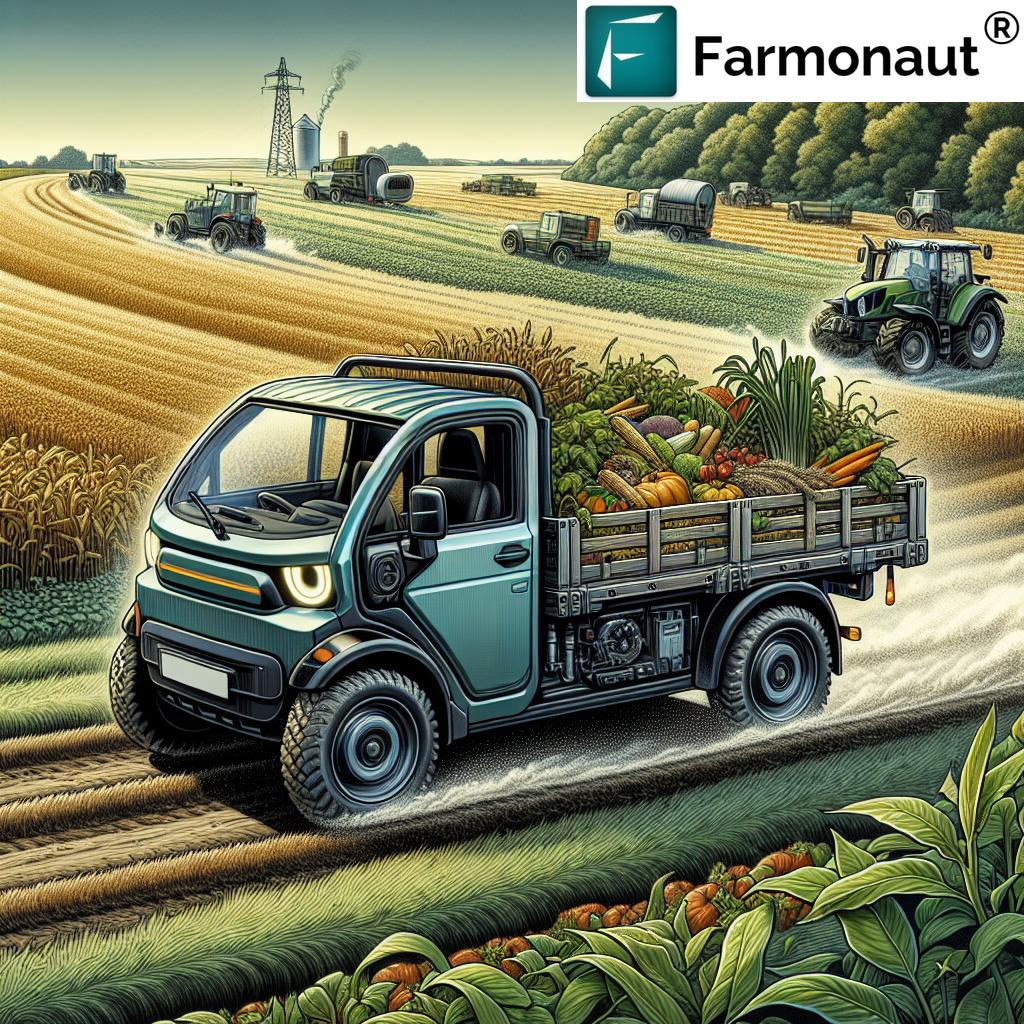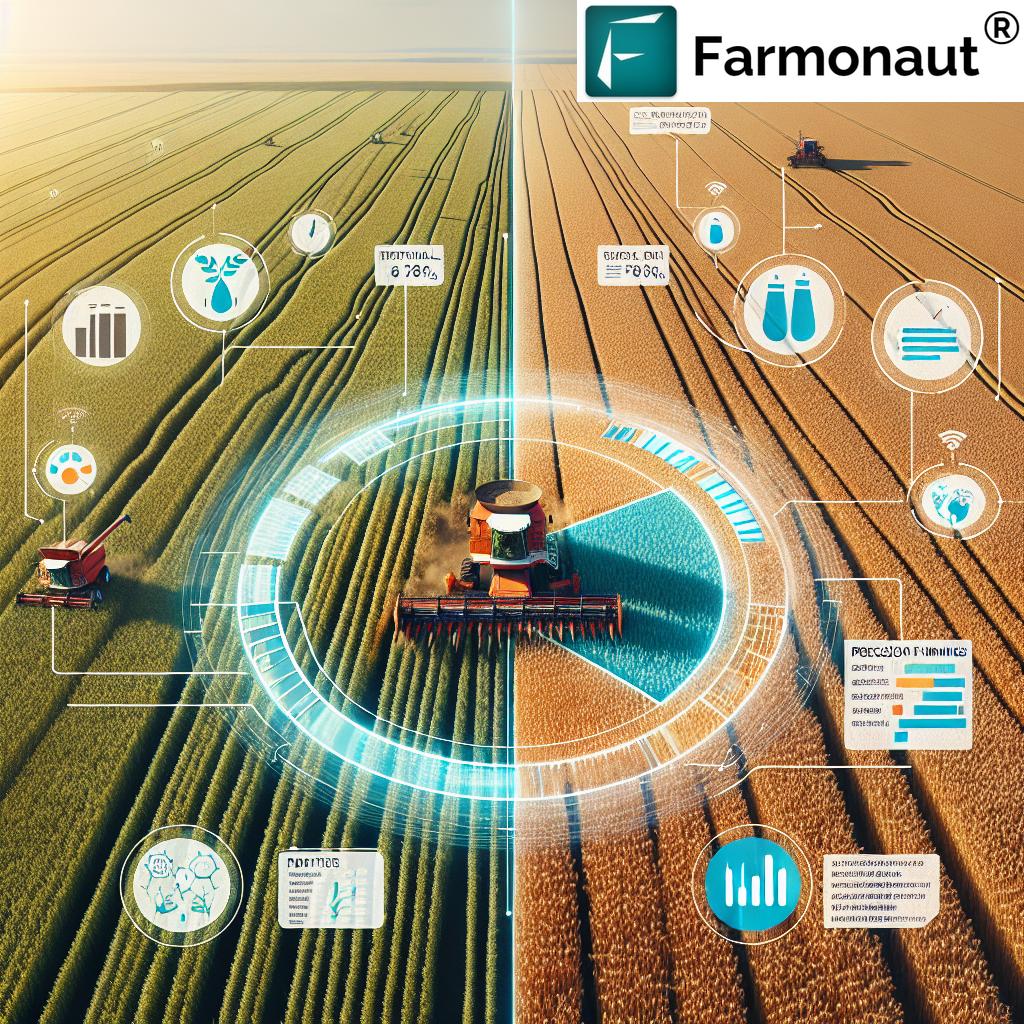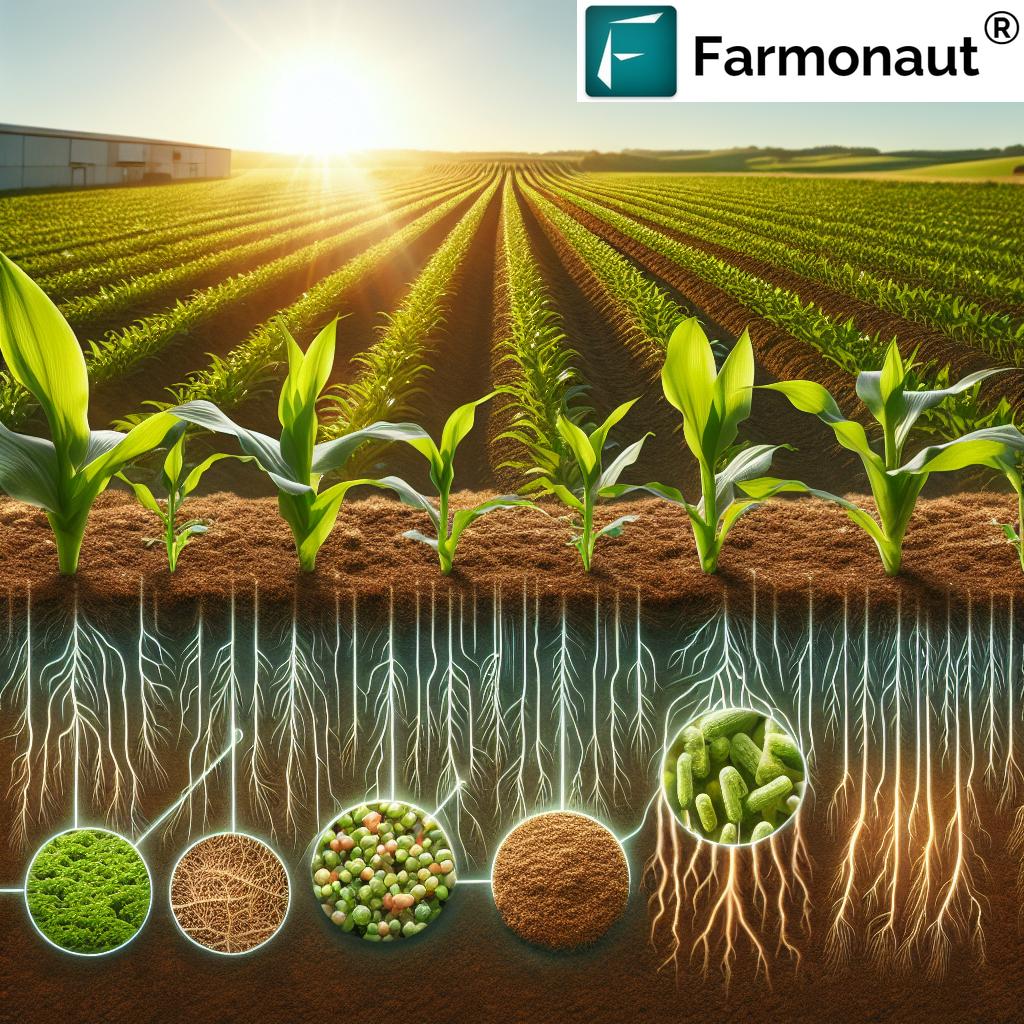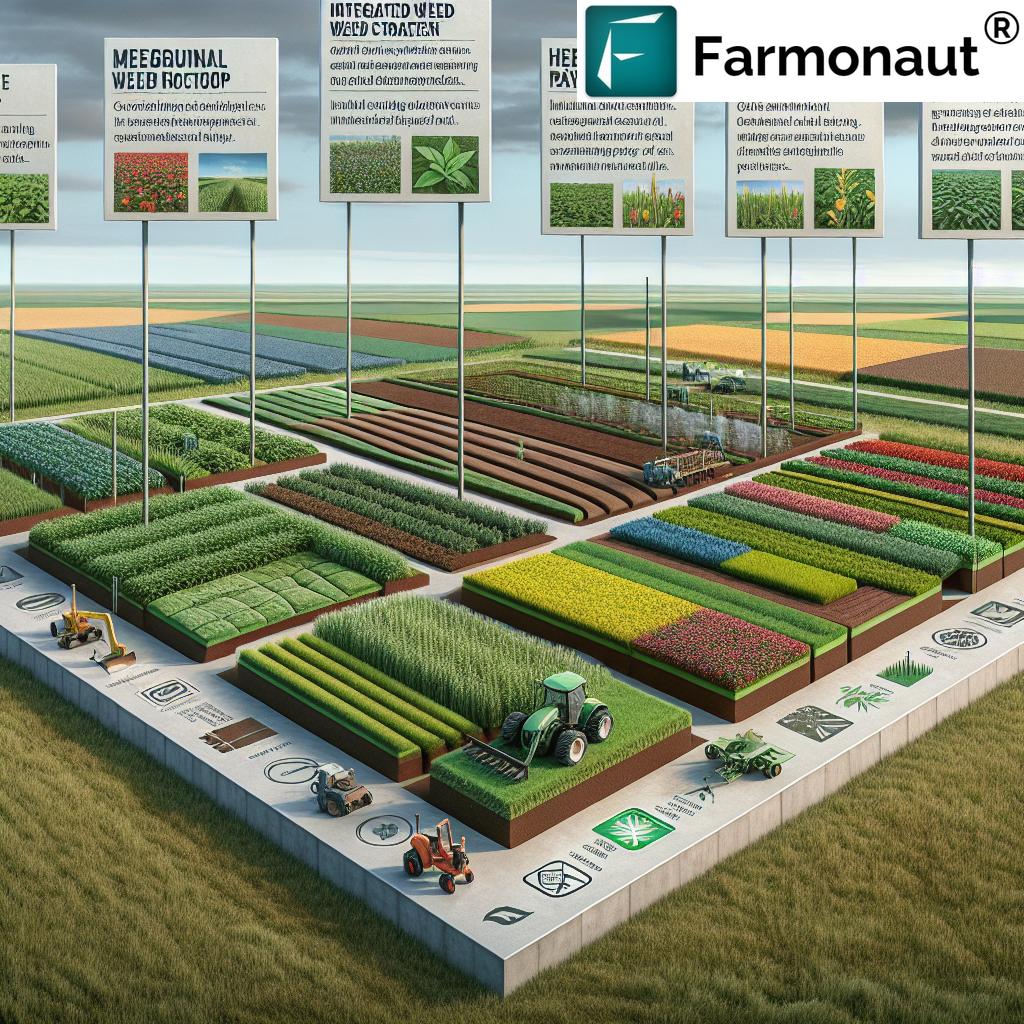Small Farm Utility Vehicles: 7 Ways to Boost Efficiency
“Electric small farm utility vehicles can reduce farm emissions by up to 30% compared to traditional diesel models.”
Table of Contents
- Introduction
- What are Small Farm Utility Vehicles?
- Types of Small Farm Utility Vehicles
- Feature Comparison Table: Utility Vehicles for Agriculture
- Key Applications in Agriculture and Forestry
- 7 Ways Small Farm Utility Vehicles Boost Efficiency
- Advantages of Small Farm Utility Vehicles
- Considerations When Selecting a Small Farm Utility Vehicle
- Leading Manufacturers and Models
- Maintenance and Safety Considerations
- Farmonaut Technologies for Farm Utilities
- FAQ: Small Farm Utility Vehicles
- Conclusion
Introduction
Modern agriculture and forestry demand efficient, versatile, and sustainable solutions for daily operations. Small Farm Utility Vehicles (SFUVs) have emerged as a game-changing technology, enabling small and mid-sized farms to boost productivity, reduce emissions, and streamline tasks on diverse terrains. This comprehensive guide explores the various types, applications, and benefits of these vehicles, including the latest in electric farm vehicles and smart technology integration.
As part of the global push towards precision agriculture, integrating utility vehicles for agriculture and forestry delivers measurable improvements in efficiency and sustainability. Let’s examine how these innovative machines are reshaping daily farm operations—and which models and features can most effectively elevate your workflow.
What are Small Farm Utility Vehicles?
Small farm utility vehicles are specially designed machines intended to enhance day-to-day farming, agricultural, and forestry operations. Tailored for small to mid-sized farms, these vehicles focus on versatility, adaptability, and maneuverability—allowing users to efficiently complete a wide array of tasks that range from transporting supplies and personnel to maintaining fields and managing livestock.
Available in several forms, such as UTVs (Utility Task Vehicles), ATVs (All-Terrain Vehicles), and electric utility vehicles, these machines cater to the demands of modern agriculture while supporting goals like reducing emissions in agriculture and overall operational cost reduction.
Incorporating small farm utility vehicles into daily routines enables farmers and foresters to increase efficiency, streamline tasks, and adopt sustainability initiatives integral to modern agricultural utility vehicle applications.
Types of Small Farm Utility Vehicles
Choosing the right farming vehicle depends on the unique demands of your land, terrain, and regular activities. Let’s examine the core types of small farm utility vehicles and their specific advantages across agriculture and forestry industries.
1. Utility Task Vehicles (UTVs)
- Structure: Bench or bucket seat alongside a steering wheel, enabling either single or multiple personnel transport.
- Optimized for: Transporting tools, equipment, and workers across varied terrains.
- Advantages: Larger cargo capacities, superior stability, spacious seating, and adaptability for rugged or narrow landscapes.
- Typical Uses: Hauling supplies, moving harvested crops, and operating with field attachments like spreaders or sprayers in soil preparation or planting.
2. All-Terrain Vehicles (ATVs)
- Design: Four-wheelers best for single riders with exceptional maneuverability and agility.
- Optimized for: Navigating rough, narrow landscapes or trails inaccessible to larger machinery.
- Advantages: Speed, ability to travel into woodland or remote parts of the farm, fast equipment transport for smaller payloads, cost-effective farm transportation for lightweight tasks.
3. Electric Utility Vehicles (Electric SFUVs)
- Powertrain: Battery-based, offering zero on-site emissions and silent operation.
- Optimized for: Farms seeking environmental sustainability and cost savings via reduced fuel expenses and lower maintenance requirements.
- Advantages: Reduced overall running costs, minimal noise (ideal for livestock management), improved efficiency, and easy integration into smart-farm fleets.
- Use Cases: Supporting precision agriculture, field monitoring, and reduction of carbon footprint.
4. Hybrid Utility Vehicles
- Powertrain: Combination of gasoline/diesel and electric drivetrains for flexibility.
- Optimized for: Farms with inconsistent access to charging infrastructure but a desire to reduce emissions in agriculture.
- Advantages: Balance between power, fuel efficiency, and greener operations when compared to conventional diesel-only models.
5. Specialized Crop and Forestry Utility Vehicles
- Structure: Designed with attachments and configurations for unique tasks like log moving, fertilizer spreading, field plowing, and site assessments.
- Optimized for: Versatile forestry utility vehicles and agricultural work in specialized or rugged terrains.
Feature Comparison Table: Utility Vehicles for Agriculture
One of the best ways to choose your ideal agricultural utility vehicle is through a direct feature comparison. The table below highlights how conventional diesel, electric, and hybrid models stack up for modern farms and forestry operations.
| Vehicle Type / Model | Estimated Efficiency Boost (%) | Estimated Emission Reduction (%) | Terrain Adaptability (Score 1–5) | Load Capacity (kg) | Estimated Annual Operating Cost (USD) | Notable Innovative Features |
|---|---|---|---|---|---|---|
| Conventional Diesel SFUV | 22 | 0 | 5 | 400–700 | 1,800–2,600 | Robust towing, high power for plows and spreaders |
| Electric SFUV | 25 | 30 | 4 | 300–600 | 900–1,400 | Silent operation, zero emissions, low maintenance, integrated AI |
| Hybrid SFUV | 23 | 18 | 5 | 350–650 | 1,300–2,000 | Switchable power modes, extended range, battery regeneration |
| Specialized Forestry UTV | 21 | 10 | 5 | 600–900 | 2,000–2,900 | Log attachment, rugged chassis, high ground clearance |
| Compact ATV (Gasoline) | 17 | 0 | 4 | 80–200 | 700–1,300 | Low purchase cost, extremely agile on narrow paths |
| Electric ATV | 19 | 22 | 4 | 90–220 | 600–1,100 | Eco-friendly, silent, minimal vibration for livestock areas |
“Modern utility vehicles can increase small farm operational efficiency by as much as 25% across diverse terrains.”
Key Applications in Agriculture and Forestry
Small farm utility vehicles are pivotal in bridging the gap between traditional farm equipment for efficiency and the demands of precision farming. Here’s a quick overview of their most impactful applications:
- Transporting Supplies and Personnel: Whether moving seeds, fertilizers, harvested crops, tools, or farm workers, these vehicles efficiently move resources exactly where they’re needed.
- Field Maintenance: Attachments like plows, spreaders, and sprayers enable these vehicles to tackle everything from soil preparation and planting to pest control and irrigation.
- Livestock Management: Ideal for herding, feeding, and monitoring livestock. Their agility ensures timely interventions and enhances overall herd management.
- Forestry Operations: In forestry, utility vehicles are key for transporting logs, clearing trails, and performing site assessments—all while navigating rugged terrains.
- Specialized Applications: Custom configurations allow use in specific tasks like precision spraying, mulching, and rapid emergency response.
7 Ways Small Farm Utility Vehicles Boost Efficiency
The integration of utility vehicles for agriculture and forestry offers a tangible boost to operational efficiency. Below, we detail seven strategic ways these machines drive productivity, reduce expenses, and deliver sustainability:
-
Swift Transport Across Terrains:
- UTVs and ATVs can traverse narrow trails, rugged, or muddy fields—often outpacing larger tractors or trucks for in-field movement.
- This makes transporting supplies—from seeds to harvested crops—faster and more energy-efficient.
-
Multipurpose Attachments Enhance Versatility:
- With quick-attach systems, SFUVs can switch between plows, spreaders, sprayers, trailers, and even fencing or log hauling equipment.
- This transforms one vehicle into a year-round asset for both farming and forestry.
-
Reduced Labor and Increased Productivity:
- Machines handle physically demanding or repetitive tasks like towing, fetching, or field scanning, minimizing labor costs and human fatigue.
- This allows personnel to focus on higher-value management and decision-making.
-
Lower Fuel Expenses and Maintenance:
- Electric utility vehicles operate with fewer moving parts—translating into less routine maintenance, lower breakdown rates, and less dependence on fossil fuels.
- Over time, these savings fundamentally improve profitability and sustainability.
-
Data Collection and Smart Integration:
- Many modern vehicles integrate sensors, GPS, and IoT connectivity—enabling real-time tracking of usage, field mapping, and compliance with sustainability protocols.
- This is especially powerful when combined with satellite-based advisory systems and farm fleet management solutions for remote monitoring and optimization.
-
Improved Livestock Management:
- Use SFUVs for herding, rounding up, and daily feeding, even when flocks or herds are dispersed over challenging terrain.
- This agility ensures timely intervention and rapid response to animal health or security events.
-
Support for Sustainable Farming Initiatives:
- Electric and hybrid terrain adaptable farming vehicles actively lower carbon footprints and align with regulatory compliance.
- Data-driven tracking further supports initiatives like carbon footprinting in agriculture, essential for future resilience and eco-friendly certifications.
Advantages of Small Farm Utility Vehicles for Farms and Forestry
- Enhanced Efficiency: Agile, small farm utility vehicles ensure quick task completion, reducing labor time and increasing farm productivity.
- Cost-Effectiveness: Electric models and efficient ATVs/UTVs minimize fuel expenses, while modular designs lower maintenance and replacement part costs.
- Environmental Sustainability: Battery-powered and hybrid models contribute to reducing emissions in agriculture, as do features like precision application of fertilizers and pesticides.
- Versatility and Adaptability: A wide range of attachments and quick-change implements make a single vehicle adaptable for dozens of seasonal tasks.
- Customization for Farming and Forestry Operations: Whether addressing minor repairs or large-scale site assessments, vehicle platforms can be tailored with specialized equipment to suit diverse applications.
- Simplified Training and Safer Operation: Modern vehicles include updated safety features, intuitive controls, and require less specialized training than full-sized agricultural machinery.
- Digital Integration for Next-Level Management: Fleet and resource management platforms, like those offered by Farmonaut, allow farms and businesses to remotely monitor usage, schedule maintenance, and plan logistics.
Considerations When Selecting a Small Farm Utility Vehicle
Selecting the ideal utility vehicle for your operation isn’t just about upfront cost—it involves understanding terrain, typical tasks, maintenance logistics, and long-term sustainability goals:
-
Terrain Compatibility: Does your vehicle need to handle hills, mud, forested trails, or tight corridors between rows?
- Terrain adaptability is rated by ground clearance, four-wheel drive options, and maneuverability.
- Load Capacity: Make sure the vehicle can efficiently move your typical daily loads—be it fertilizer, feed, fencing supplies, or harvested crops.
-
Power Source: Balance between gasoline, diesel, or electric models.
- Electric vehicles offer lower running costs and emissions but require access to charging infrastructure.
-
Maintenance and Service:
- Consider the availability of service centers and ease of routine maintenance to reduce operational downtime.
- Attachment & Implement Compatibility: Ensure compatibility with farm vehicle attachments necessary for your crop or livestock program.
- Safety and Regulatory Compliance: Look for models with essential safety features and compliance certifications, especially if operating in regulated forestry or agricultural industries.
- Long-term Environmental Goals: For farms committed to sustainability, consider vehicles that align with carbon footprinting and environmental compliance programs. Explore resources like Farmonaut’s Carbon Footprinting Solution.
Leading Manufacturers and Models
Top manufacturers offer a range of utility vehicles for agriculture and forestry, each with unique features and strengths:
-
John Deere Gator:
Renowned for rugged UTV models, providing durability and flexibility on diverse terrains. Ideal for hauling, towing, and supporting a full suite of attachments. -
Alkè Electric Vehicles:
Specializes in high-capacity electric utility vehicles that deliver emission-free performance with exceptional torque and adaptability. -
Westward Industries’ MAX-EV:
Designed specifically for farm work, this electric model offers excellent efficiency, low running costs, and integration with digital farm management.
When assessing these options, always compare efficiency boost, load capacity, terrain compatibility, and operating costs to find the right fit for your farm or forestry operation.
Maintenance and Safety Considerations
Regular maintenance and safe operation are non-negotiable priorities for any farm utility vehicle fleet:
- Routine Checks: Inspect tires, brakes, and (on electric models) battery levels. Replace fluids, check steering components, and test safety equipment.
- Cleaning: Keep vehicles free of debris, mud, and crop residue. Regular washing preserves mechanical systems and reduces corrosion risk.
- Operator Training: Make sure all personnel understand vehicle controls and are briefed on safety practices and emergency response.
- Scheduled Servicing: Follow manufacturer guidelines for oil changes, belt inspections, and software/firmware updates for smart vehicles.
- Digital Fleet Oversight: Use smart management platforms (like Farmonaut Fleet Management) to schedule service, monitor performance, and automate compliance logs.
Farmonaut Technologies for Farm Utilities
At Farmonaut, we are dedicated to enabling precision agriculture, delivering cost-effective, scalable, and sustainable farm management solutions worldwide. Our platform integrates seamlessly with utility vehicles—to support fleet management, crop health tracking, advisory systems, and traceability across the entire agricultural value chain.
- Satellite-Based Crop Health Monitoring: We leverage high-resolution satellite imagery to help farmers monitor crop health, soil moisture, and pest risks, facilitating smarter use of farm equipment, including utility vehicles.
- Fleet & Resource Management: Track vehicle locations, schedule tasks, and automate service intervals with Farmonaut’s Fleet Management solution. Reduce operating costs and extend your machinery’s lifecycle.
- Jeevn AI Advisory System: Personalized, AI-driven advice empowers optimal vehicle and equipment scheduling, improving efficiency and productivity.
- Blockchain-Based Product Traceability: By connecting every stage of the supply chain via blockchain, we enable secure, transparent monitoring of tools, assets, and products. Learn more about Farmonaut Traceability.
- Carbon Footprint Tracking: Our platform helps monitor and reduce emissions from both agricultural practices and utility vehicles. Explore our Carbon Footprinting tools.
Our API and Developer Documentation make it easy to integrate advanced monitoring into your own digital farm management solutions.
FAQ: Small Farm Utility Vehicles
1. What is a small farm utility vehicle (SFUV)?
A small farm utility vehicle is a compact, multifunctional machine designed to handle a wide range of agricultural and forestry tasks. They enhance daily operations by transporting supplies, supporting field maintenance, and improving overall farm efficiency.
2. How do electric farm vehicles improve sustainability?
Electric farm vehicles produce zero emissions and consume less energy compared to traditional diesel models. They play a vital role in reducing emissions in agriculture and help farms meet sustainability and regulatory targets.
3. What attachments are available for utility vehicles on the farm?
Common attachments include plows, spreaders, sprayers, trailers, fencing tools, and forestry implements like log haulers or mulchers. The right attachments multiply the efficiency of one vehicle for dozens of applications across the year.
4. How do I maintain my farm utility vehicle?
Regularly inspect moving parts, keep the vehicle clean, schedule professional servicing, and use digital fleet management tools (such as Farmonaut’s platform) to plan maintenance and monitor vehicle performance.
5. Can I integrate digital management tools with my utility vehicles?
Yes! Tools such as Farmonaut’s fleet management solution are designed to help track, manage, and optimize the use of utility vehicles, combining satellite imagery, AI, and data to boost overall farm efficiency.
6. Are small farm utility vehicles suitable for forestry?
Absolutely. Versatile forestry utility vehicles are built for logging, trail clearing, and conducting site assessments even in rugged, remote forest areas.
7. How do utility vehicles enhance livestock management?
By making herding, feeding, and health checks faster—thanks to their agility across pastures and rough terrain. Electric models also reduce stress to animals due to quieter operation.
8. What digital tools can help monitor and reduce vehicle emissions?
Platforms like Farmonaut’s Carbon Footprinting can help you track, analyze, and lower your fleet’s carbon emissions.
Conclusion
The shift toward small farm utility vehicles marks a pivotal moment in the evolution of modern agriculture and forestry. Whether integrated through cutting-edge electric models, hybrid designs, or classic UTVs and ATVs, these machines offer unparalleled adaptability, maneuverability, and productivity for farms of every scale.
As new challenges emerge and technology advances, utility vehicles for agriculture, especially those enriched with digital management and fleet optimization tools, are more important than ever for enhancing efficiency, reducing environmental impacts, and supporting a future-ready agricultural sector.
At Farmonaut, we are passionate about helping farmers harness this revolution. Our precision tools make it simpler to monitor, manage, and optimize utility vehicle operations, reduce costs, and ensure lasting sustainability for your farming venture.
Embrace the next era in agriculture and forestry efficiency. Harness the power of small farm utility vehicles, deploy state-of-the-art management technology, and watch your farm’s productivity reach new heights.


















